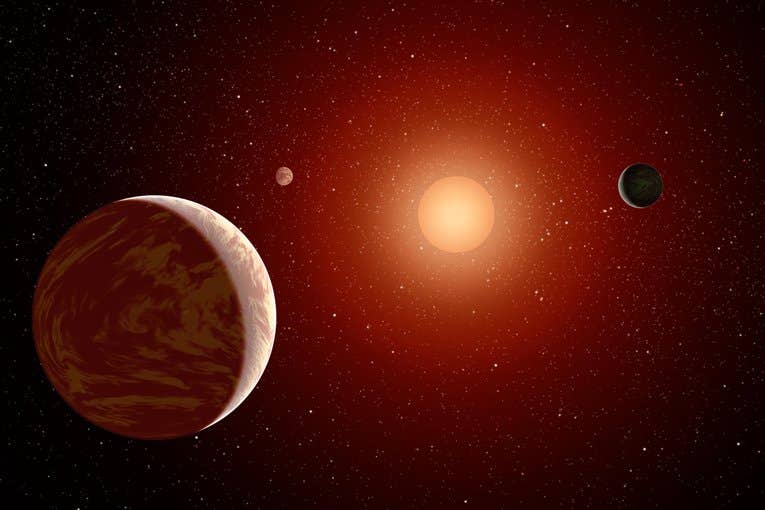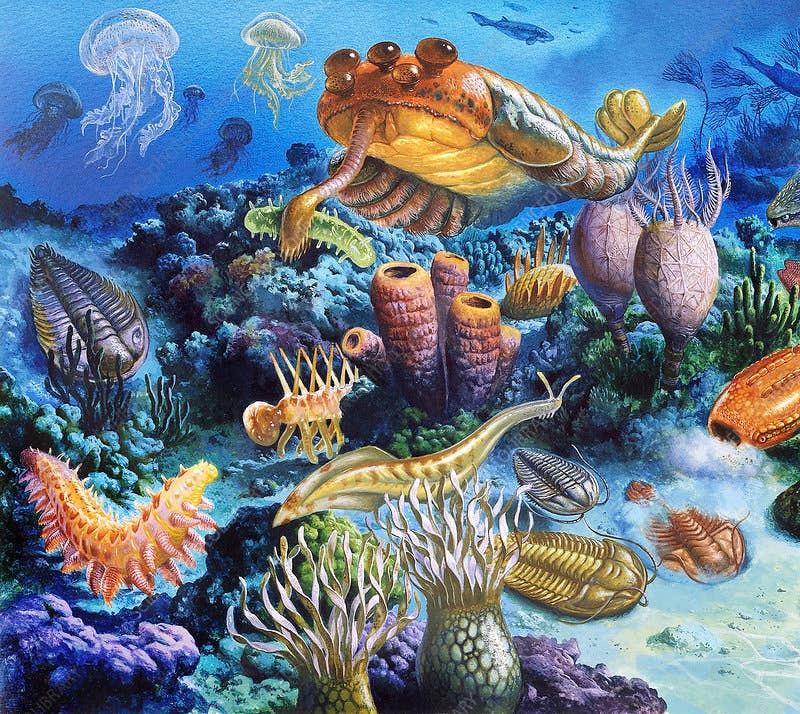Hundreds of millions of planets orbit in a life-sustaining ‘Goldilocks’ orbit, study finds
Dwarf stars, cooler and no larger than half the size of our sun, make up the majority of stellar bodies in our galaxy.

[May 31, 2023: Staff Writer, The Brighter Side of News]
Artist’s impression of a M dwarf star surrounded by planets. (CREDIT: NASA/JPL-CALTECH/MSSS)
It's easy to forget that our sun is a yellow dwarf star – a warm, cozy presence in our celestial neighborhood that is, in fact, a rarity in the vast expanse of the Milky Way galaxy. Dwarf stars, cooler and no larger than half the size of our sun, make up the majority of stellar bodies in our galaxy. A multitude of planets circle these common cosmic bodies, leading to intriguing possibilities for habitability.
To be considered habitable, these planets need to be situated in close proximity to their stars, a positioning that leaves them vulnerable to strong tidal forces. In a groundbreaking study conducted by University of Florida astronomers, new data suggests that tidal extremes could render two-thirds of these planets inhabitable by causing extreme heat conditions, possibly sterilizing them.
However, this revelation is not entirely bleak. With billions of these common dwarf stars in our galaxy, this statistic leaves a considerable one-third, amounting to hundreds of millions of planets, in a potentially life-sustaining 'Goldilocks' orbit. These planets are situated close enough to their respective stars to maintain liquid water, and thus, stand a chance of fostering life.
This week saw these compelling findings, the fruits of rigorous study by UF astronomy professor Sarah Ballard and doctoral student Sheila Sagear, published in the Proceedings of the National Academy of Sciences. Both Ballard and Sagear have a deep academic interest in exoplanets, worlds that revolve around stars other than our own sun.
Related Stories
Sagear, commenting on the implications of their discovery, stated, “I think this result is really important for the next decade of exoplanet research, because eyes are shifting toward this population of stars,” She continued, “These stars are excellent targets to look for small planets in an orbit where it’s conceivable that water might be liquid and therefore the planet might be habitable.”
The duo's methodology involved gauging the eccentricity, or the degree of deviation from a perfect circle, of over 150 planet orbits around these M dwarf stars, approximately the size of Jupiter.
The closer a planet is to its star, roughly at a distance similar to that between Mercury and the sun, the more an eccentric orbit can expose it to a phenomenon known as tidal heating. As the planet experiences distortion due to fluctuating gravitational forces during its irregular orbit, internal friction generates heat. In extreme cases, this could 'bake' the planet, negating any possibility for liquid water.
Schematic diagram of the traditional orbital distance boundaries of the habitable zone (HZ) for stars of different masses. The red and orange lines denote the optimistic " recent Venus" (inner) and " early Mars" (outer) edges of the HZ. The blue lines bound the conservative " runaway greenhouse" (inner) and " maximum CO 2 greenhouse" (outer) HZ limits. The Solar System planets, as well as several habitable-zone exoplanets are plotted here for reference. (CREDIT: Chester Harman)
Ballard pointed out the relevance of their findings, saying, “It’s only for these small stars that the zone of habitability is close enough for these tidal forces to be relevant.”
Data utilized for their research was sourced from NASA's Kepler telescope, which records information about exoplanets as they transit, or pass in front of, their host stars. In order to measure the planets' orbits, the scientists specifically concentrated on the time taken by the planets to traverse the face of their stars. Their research was further enhanced by fresh data from the Gaia telescope, which has measured the distance to billions of stars in our galaxy.
The estimated habitable zones of A stars, G stars and M stars are compared in this diagram. More refinement is needed to better understand the size of these zones. (CREDIT: NASA/JPL-CALTECH/MSSS)
“The distance is really the key piece of information we were missing before that allows us to do this analysis now,” Sagear explained.
Their findings indicate that stars with multiple planets are more likely to have circular orbits conducive to retaining liquid water. Conversely, stars with only a single planet are more susceptible to tidal extremes potentially sterilizing the surface.
Given that a third of the planets sampled in this study had orbits gentle enough to potentially contain liquid water, the implications for exoplanet research are profound. It suggests the possibility that the Milky Way houses hundreds of millions of promising targets to search for signs of life beyond our solar system.
As the cosmic gaze of astronomers shifts towards these dwarf stars, our understanding of potential extraterrestrial life continues to expand, reshaping our place in the vast cosmic scheme.
Note: Materials provided above by The Brighter Side of News. Content may be edited for style and length.
Like these kind of feel good stories? Get the Brighter Side of News' newsletter.
Joseph Shavit
Head Science News Writer | Communicating Innovation & Discovery
Based in Los Angeles, Joseph Shavit is an accomplished science journalist, head science news writer and co-founder at The Brighter Side of News, where he translates cutting-edge discoveries into compelling stories for a broad audience. With a strong background spanning science, business, product management, media leadership, and entrepreneurship, Joseph brings a unique perspective to science communication. His expertise allows him to uncover the intersection of technological advancements and market potential, shedding light on how groundbreaking research evolves into transformative products and industries.



